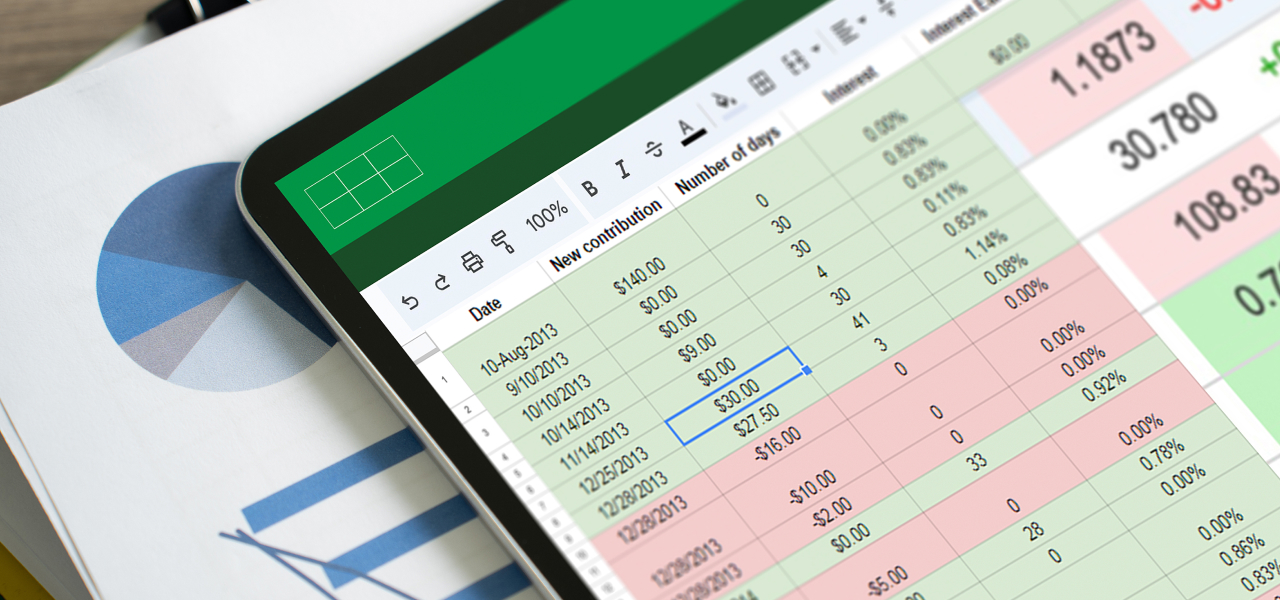It is important to stay ahead of the curve in an economic and technological environment where things are evolving so profoundly. Committing to a new accounting software system is a big endeavor. It impacts how you set up your workflow and it requires at least a temporary disruption as your team members transition and get familiarized with the new software. For these and other reasons, it is important to do your due diligence and get it right the first time. The choice isn’t an easy one. A number of good packages are available from vendors such as FundCount, SEI Archway, Allvue, Addepar, Asset Vantage and others. But how do you know which one is specifically right for you? The purpose of this guide is to help you better assess that question by breaking it down into four key areas to focus on and to help you narrow the field of choices.
Multiple Asset Classes & Alternative Asset Management
Family offices tend to have more sophisticated and unique portfolios compared to other types of investment manager groups. This includes tracking and reporting on personal assets, alternative assets and marketables from equities, fixed income, structured products, derivatives, options, swaps, futures, currency and on to crypto currencies and more. Alternative assets not only vary from traditional assets, they can come with idiosyncratic requirements that a software package may or may not be set up to handle. Crypto, for instance, uses far more decimal spaces than, say, equities.
Not all software supports all asset classes, which is a key constraint given the desire of Family Office to see their entire wealth, across Personal, Alternative and Market Assets. For example eFront or Investran are private equity-centric, while Addepar deals with market assets. However, this is an area where you will want to take a close and careful look. Supporting an asset class and actually specializing in it can mean the difference between just having a placeholder field and work-arounds available, compared with having robust reporting capabilities dedicated to that asset class. Each type of investment has unique functionalities and features that must be accounted for individually. If these are not properly addressed in the system, reporting can suffer. When an asset class has been meticulously gauged and the properties of each and every class are considered to ensure that it is fairly represented, the payoff comes to fruition when charting and generating reports.
Privacy Considerations
Data sensitivity is increasingly an issue in an era where cloud storage is prominent and large providers such as Amazon, and even the government, potentially have access to information you are obliged to keep from prying eyes. Cloud storage can be very secure, but if you still hold some level of concern, look for a provider that makes it possible to store all your data on your own premises, giving you complete control and sole access to it. As a single client server solution, you can deploy FundCount on premise, in your own private hosted cloud, in a public cloud or on the FundCount Cloud.
Single Source of Truth
Data integrity has always been at the forefront of the accounting industry for obvious reasons. When inputs are compiled into separate software systems, however, it’s not hard to see how the information can be hard to assess when pulled from those different systems in the reporting process, requiring considerable reconciliation effort. A unified platform addresses this by using a single program, founded on the general ledger, to provide the end user with a single source of truth.
Continuous Accounting
Traditional accounting is a closed-book system. Reporting is typically run at the end of each month when the books for that month are closed and the official numbers are released, allowing for reporting. This methodology, which is more suited to traditional manufacturing and service businesses, comes with limitations in the investment world. Management decisions require data and if the data is based on last month’s numbers that are not delivered until half way through the following month, then new developments simply cannot be factored in with any reasonable level of accuracy or timeliness. Estimates are of course possible, but nothing is really known for a fact until the books are closed and the reports are run. FundCount’s continuous accounting approach audits the system for General Ledger, Portfolio Performance and Partnership Accounting as data is entered. This means ad hoc reporting is available 24/7 without closing the books.
We live in an era of disruptive technology and accounting is being impacted by new solutions along with many other conventions. Continuous accounting is an innovative approach to accounting that gives you a real-time look at the data, no matter where things are in the accounting cycle. This takes all the guesswork out of the decision-making process and provides a crucial edge over firms that only have access to current information. Before making your own decision on which accounting package to choose for your office, make sure the vendor you are considering offers this inventive approach.

How the Landscape Stacks up
Family offices on the lookout for back-office system support are faced with three basic choices.
The Unified Platform Choice
A unified platform differs from an integrated platform in that in the former, all the features and functions you need are housed in one software program. Your accounting, partnership, portfolio, data aggregation and reporting needs are all in one place. As you will appreciate, this drives optimal organization as there is no need to reconcile data between systems or adopt time-consuming workflow processes to accommodate multiple systems. Data is entered once and acted on by the General Ledger, Portfolio Management, Partnership Accounting and Reporting tools all at the same time. FundCount is a unified platform, built around its proprietary, established and robust investment general ledger. Why this is important will become clearer once we examine the second category of solutions available to the family office.
The Integrated Platform Choice
The second group of options are the integrated platforms, such as SEI Archway. These are solutions using two or more software products to deliver client needs. They can be more or less tightly integrated, but the more integrated, the better for the client. The most tightly integrated platform for the US market is SEI Archway.
Our clients and prospects who have used or considered SEI Archway note that there are two big factors that effect their experienced and efficiency, derived from SEI Archway’s general ledger. First, unlike FundCount, it only consolidates in US dollars. Family Offices that own any foreign entities simply must find a work-around outside the system and are unable to report in local currency. FundCount allows you to report and consolidate in any currency.
Second, it deals with simple structures very effectively, but it’s not very friendly when it comes to large, complex, multi-entity structures. The main reason for this appears to be that reporting can only be initiated from closed periods and that it can take up to four hours per entity to do so. So for instance, if you want to go back and change the valuation of a private equity holding – something which is done each year – and the asset-owning entity is low in the entity group structure, then the close process across multiple entities becomes exhausting, delaying reporting.
Allvue is another option. Like SEI Archway, it also uses a general ledger designed for a manufacturing or service company, in this case, MS Dynamics. The fact that this general ledger was not built for the investment world means reporting is not considered flexible, and you have to close the books to run reports, meaning instant ad hoc reporting is a dream. There are also no APIs to help with data collection and integration.
Asset Vantage provides good capability around secondary market assets but has less capability with alternative assets. For example, it only calculates performance on private equity from inception, unlike FundCount, which allows periodic reporting. Similarly, gains and losses can only be calculated on a historical cost basis, not the periodic movement in fair value. FundCount tracks and reports on cost and fair value/revaluation bases. Finally, Asset Vantage does not track commitments, which FundCount does.
The Best Of Breed Platform Choice
This third category consists of software choices where you integrate solutions yourself or in conjunction with one or more of your vendors. In this respect, you might consider Addepar for your Portfolio Management Solution and team up with any generic General Ledger software, such as Quickbooks or Sage.
In the case of Addepar, this is necessitated by the fact that it does not have an internal general ledger and cannot present data for import directly into a General Ledger. In this case, you will need third-party software or a team to generate the journals for your General Ledger. And you will be going through an iterative, time-consuming process to generate allocation of returns as the information regarding partnership allocation will be split across two systems, unlike FundCount, which will automatically and seamlessly calculate allocations to the partners as performance and capital data are entered.
Addepar also has limited ability to extend reporting, while FundCount has unlimited custom fields that you can create and include within reports in seconds and minutes without assistance from FundCount.
Opting for a Best-Of-Breed approach requires good internal business process analytical and system migration and IT skills. As many Family Offices have software lifecycles in excess of ten years and are often light on IT skills, system implementation and migration experience is a real concern.
The Hybrids
The fourth category is the software/service hybrids.
These solutions can have impressive reporting presentations, but they often consist of multiple software solutions bolted together more or less well, which requires a lot of human intervention to provide a coherent solution. Naturally, the consequence of the requirement to use manpower to fill the capability gaps, and this leads to errors and considerable reconciliation work. Once a human element is introduced, you end up with bugs and errors
A Word of Caution
If we could offer a word of caution as you navigate this landscape, it is to be careful when it comes to being wowed by flashy reporting, charts, and graphs with no real substance to the accounting and complex behind-the-scenes calculations.
Many solutions define the problem of accounting and analytics as a visualization obstacle. Improving the visualization of a data problem does not actually solve accuracy, speed of delivery, and the relevance of data, but merely redesigns it. Some firms raise a ton of money from private equity and invest heavily in beautiful-looking user interfaces and impressive-looking reports but fail to solve the routing problem of making use of disparate sources of data for different asset classes housed in complex structures. FundCount believes that it is actually a data aggregation, parsing, and mapping problem that most users need to solve for, not a visualization problem.
To make an example of private equity as an asset class, family offices investing heavily in private equity – as most do – may wish to actually understand how systems really support this asset class, not just look at the end product sample reports, which may have errors.
When touring demos, try to understand how transaction activity is captured and tracked (capital calls, contributions, distributions, changes in ownership structures, aggregation of this data). Understand how this data is manipulated to produce GAV, NAV, and capital calls. If these are not instantaneous, then your chosen solution may have a lot of hidden manpower costs for you behind the software license.
The user interface and final report look and feel are important, but they hardly matter if the data is full of errors. The prettiest girl or most handsome boy in the room may not be your ideal partner!







